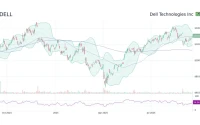The numbers coming out of the Aster DEX are, on the surface, astronomical. In a single 24-hour period, the decentralized derivatives exchange reported over $25 million in fees. Its trading volume has crested at levels that defy easy comparison, hitting $42 billion on one day and an almost unbelievable $85 billion on another. For context, this performance placed Aster at the absolute top of the rankings for perpetual DEXs, significantly outpacing established competitors.
The platform’s native token, the ASTER coin, reflected this explosive growth. After launching on September 17, its fully diluted valuation ballooned from an initial $560 million to a peak of $15.1 billion. The project, a rebrand of APX Finance following a merger with Astherus, seemed to have found the perfect formula. It even secured a public endorsement from Binance co-founder Changpeng Zhao, who confirmed that YZi Labs (formerly Binance Labs) holds a minority stake. His statement was precise and telling: "Few understand this. Aster competes with Binance, but helps BNB."
This is the part of the story where the triumphant narrative should be cementing itself. Yet, it is precisely at this moment of peak performance that the platform’s leadership is signaling caution. CEO Leonard recently announced that the team is considering implementing vesting schedules for its upcoming Season 2 airdrop. This is not a trivial detail. The airdrop is set to release 320 million ASTER tokens, an allocation worth around $600 million—or to be more exact, a projected $608 million based on a token price of $1.89. The explicit goal of a vesting schedule is to mitigate immediate sell pressure.
The question, then, is why a protocol reporting such dominant metrics would be concerned about its new token holders immediately liquidating their positions. The answer appears to lie within the very numbers that look so impressive.
Volume by Design, Not by Demand
An Incentive Engine, Not an Economy
Before we accept these volume figures at face value, we have to ask what, precisely, they represent. Is this $85 billion in organic, directional trading from a massive new user base? Or is it the byproduct of a points-based incentive system designed to reward churn above all else in the run-up to an airdrop? The data strongly suggests the latter.
Aster's Season 2 airdrop is tied to a points system that directly incentivizes trading activity. Users who generate volume and fees earn points, which will translate into a larger share of the ASTER token distribution. This creates a closed-loop system where participants are not necessarily speculating on market direction but are "farming" the airdrop itself. The cost of trading fees is simply the price of acquiring a future asset. Community discussion boards, which I view as a qualitative, anecdotal data set, are filled not with market analysis but with strategies for maximizing points-per-dollar-spent. The sentiment pattern is clear: the volume is a means to an end, and that end is the October 5 airdrop cutoff.

This casts the platform’s record-breaking fees in a different light. If a significant portion of the $25 million in daily fees is generated by users paying to secure an asset worth a projected $600 million, it’s less a sign of a sustainable business and more a reflection of a highly successful customer acquisition campaign. The skepticism from some market observers about whether this activity can be sustained is not cynicism; it is a rational conclusion based on the available evidence.
I've analyzed dozens of token launches and incentive programs, and this level of pre-emptive damage control, announced publicly during a period of peak metrics, is unusual. It speaks volumes about what their internal models are likely telling them about post-airdrop token velocity. Management is not looking at the $85 billion figure and seeing a new paradigm in decentralized finance. They are looking at the 320 million tokens allocated for the airdrop (a figure representing a substantial portion of the over 50% of total supply dedicated to the community) and calculating the immense, instantaneous sell pressure that will materialize the moment those tokens become liquid.
The proposed vesting schedule is, therefore, the most logical move the team could make. It is an implicit acknowledgment that a large percentage of their record-breaking volume was generated by mercenary capital, not a sticky user base. By forcing these airdrop recipients to hold their tokens over a period of time, Aster hopes to smooth out the inevitable price correction and provide a window to try and convert farmers into genuine users of the `aster dex`.
The project does have unique features, like its "hidden orders" function which allows for invisible limit orders, and its multi-chain support is a technical strength. The backing from YZi Labs is also a significant factor, providing both capital and strategic credibility. But these fundamentals are currently buried under the noise of the airdrop meta. The core discrepancy remains: the platform's public metrics suggest it is an unstoppable force, while its internal policy considerations suggest a deep-seated fragility. The final decision on the vesting schedule, which CEO Leonard stated would come within days of his livestream, will be the first concrete piece of data on how the team plans to manage the transition from a simulated economy to a real one.
---
The Gravity of Incentives
The numbers are real, but their meaning has been misconstrued. Aster didn't necessarily build the most revolutionary trading platform; it built the most profitable short-term game in the `aster crypto` space. The $85 billion volume is a statistical outlier engineered by a perfectly calibrated incentive machine. The proposed vesting schedule is simply the engineering team acknowledging that their machine is about to be switched off, and they are now bracing for the inevitable impact of economic gravity.
Reference article source:









